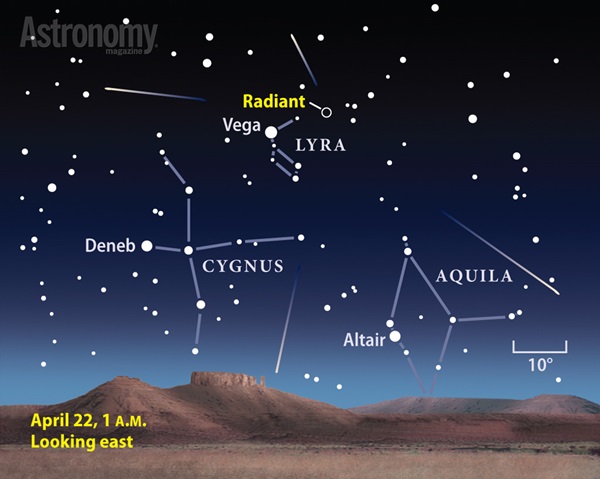Key Takeaways:
The best views of the Lyrid meteor shower will come before the Moon rises around 2 a.m. local daylight time April 22.
Astronomy: Roen Kelly
All meteor showers except the Quadrantids and December’s Geminids originate from comets. When a comet swings around the Sun, it leaves a trail of debris (small meteoroids). Sometimes, the orbit of this debris crosses Earth’s orbit. When Earth runs into this stream of particles, we experience a meteor shower. The Lyrids are particles that were once part of Comet Thatcher (C/1861 G1).
Interesting facts about meteors
- To be visible, a meteor must be within about 120 miles (200 kilometers) of an observer.
- Meteors become visible at an average height of 55 miles (90km). Nearly all burn up before they reach an altitude of 50 miles (80km).
- The typical bright meteor is produced by a particle with a mass less than 1 gram with a size no larger than a pea.
- The hourly rate on a “non-shower” night is approximately six meteors per hour.
- A meteoroid enters the atmosphere at a velocity between 50,000 and 165,000 mph (81,000 and 265,000 km/h).











